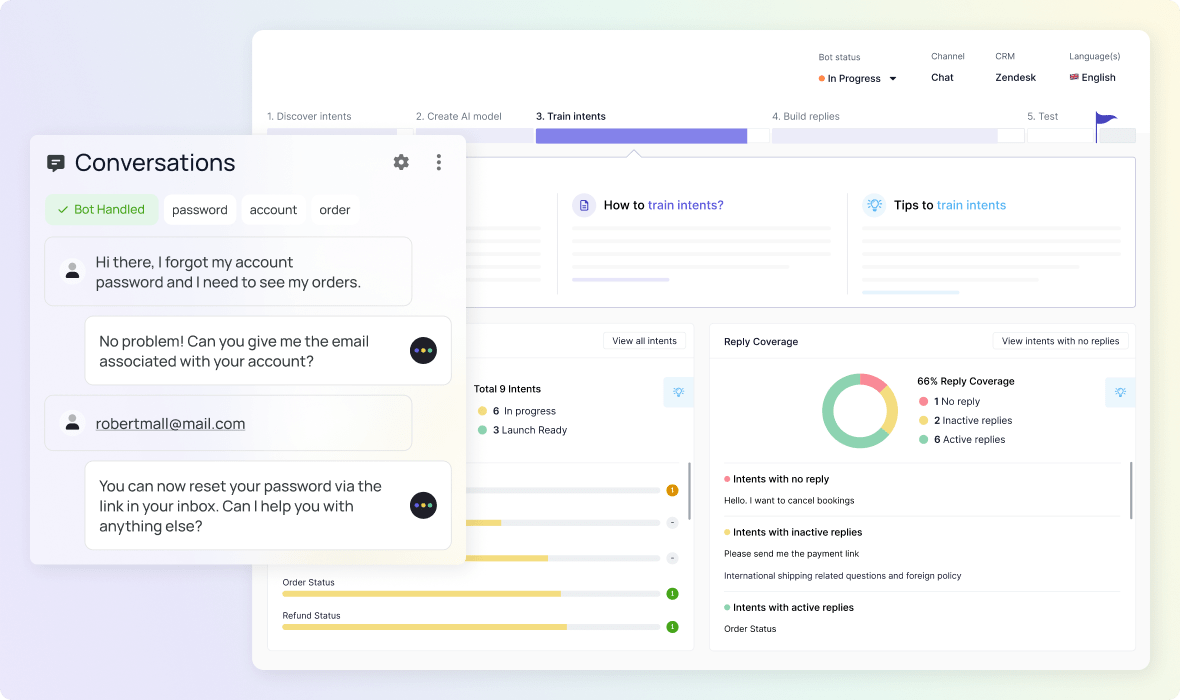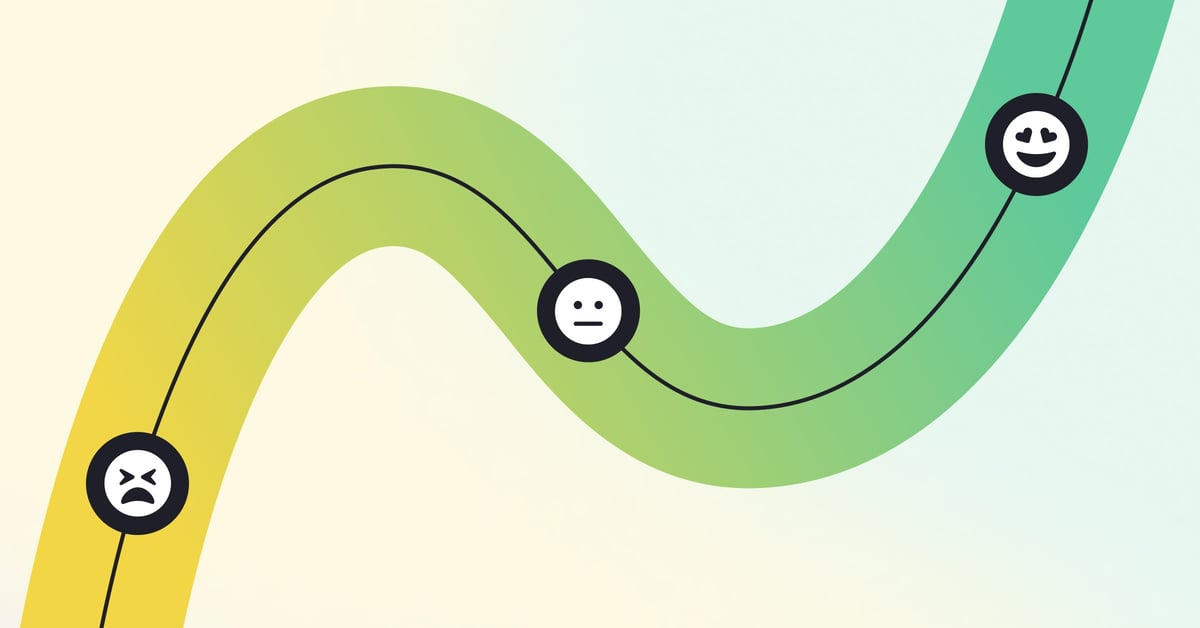Customer satisfaction (CSAT) is a simple concept. It’s a metric used by support teams to assess how the products and services provided by a company fare compared to their customers' expectations. CSAT is defined as "the number of customers, or percentage of total customers, whose reported experience with a firm, its products, or its services (ratings) exceeds specified satisfaction goals" (Appleton Greene).
As we head into 2024, it is more important than ever that your CSAT remains competitive for your industry. Current data shows that 65% of customers report that they will switch brands after just one negative support experience. And our own in-house trends research indicates that expectations only continue to rise, with customer loyalty hinging on things like speed as well as quality of support received.
Customer satisfaction is an important KPI
So with competition greater than ever, customer satisfaction is a key performance indicator for your company. It acts as a pulse check for how your customers feel about your brand, products, and the customer support they receive. While support managers may be the ones most concerned with this score, it is highly relevant to the overall function of your business and can have a big impact on your reach as well as your revenue.
But you may still be wondering what exactly is included in a CSAT score, how it’s measured, and most importantly: how do you make it surpass that of your competitors. Let’s break it down.
What is a CSAT score (and how to measure and maintain it)?
Your CSAT score measures your customers’ overall satisfaction with your brand, products, and services. Companies measure it via polls, customer feedback surveys, and focus groups. Through these methods, businesses usually ask customers to rate their satisfaction and inquire about how they can improve. The CSAT then becomes the average of these scores, and can be accompanied by more descriptive qualitative data to better explain the results.
While this is a general overview of this metric and how it is attained, Gartner notes that over 80% of companies are primarily competing for CSAT in terms of the CX offered by their support. So strategically speaking, this is the area where you’ll want to focus most of your effort and resources when it comes to reaching – and maintaining – a competitive CSAT score. Some ways to do it include reducing the time it takes to resolve a query, using analytics to monitor conversations, and upskilling agents so they are given the tools they need to offer the best quality support.
Believe it or not, CX automation can help with all of these.
How CX automation can help raise your CSAT
Resolving queries quickly
One of the biggest strengths of support automation is that it enables customers to resolve their issues faster. With the help of a chatbot, your customers can contact you – and get a response – 24/7. This drastically reduces wait times in accessing the support they need, but it doesn’t stop there. Automation is ideal for handling all of those repetitive, low-sophistication issues that bog down your support team and create longer wait times for customers: password resets, address changes, and order status updates.
Plus, with the help of generative AI, which produces remarkably human-like conversations, you can convey all this information to your customers on a 24/7 basis without skimping on the quality of your CX. Since you don’t have to train a generative AI-powered chatbot, it’s also easier than ever to get started. This translates to quick time to value for your business.
Discover more about how generative AI can optimize your support
In sum, automation enables customers to get the help they need more quickly and easily, no matter the time of day. These are customer expectations that, when satisfied, translate into a higher CSAT score.
Free up your agents’ time
Automation also helps elevate the quality of support your human agents offer when a query does get escalated. Think about it: when agents are spending hours every day answering those repetitive, mundane queries it’s going to take a toll on their patience and their mood. But when these tasks are taken out of the equation through automation, they have more bandwidth to tackle those complex queries that require empathy and creative problem solving skills.
When a request does need the attention of a human agent, they’ll be in the best shape to offer prompt and caring support – the kind that makes your customers feel valued.
So the goal is not to replace human support with automation, but to find ways to use them in tandem to provide the best possible CX for your customers, which will then reflect in your CSAT score.
Monitoring interactions with analytics
Finally, a high quality automation platform will come with comprehensive analytics dashboards that make monitoring your conversations easy. Because it’s not just about maintaining your score but continually looking out for ways to improve it.

You’ll be able to pinpoint which use cases make sense to automate next or which conversation flows could use some improvement. From there, you can develop better escalation paths, add new API integrations, or clarify the dialogues your bot uses to answer a query.
Best practices to maintain CSAT when automating
For those who are still skeptical about how automating support can actually help your CSAT rating, or else wonder how to keep CSAT high as you transition to automation, this section is for you. We’ll break down just how exactly these tools can improve the quality of your CX and share some success stories from our customers – so you don’t just have to take our word for it.
1. Scope smart when it comes to selecting use cases for automation
First off, it’s always critical to remember that the goal should never be automation at all costs. Rather, you should be strategic about which use cases make the most sense to automate first. We recommend starting with your no-touch tickets – those that can be solved in just one interaction. These are most likely your most repetitive queries which are going to be best suited for automation. They might include tasks related to account management, reservation changes, or accessing transaction data.
Scoping smart also means automating at a gradual pace rather than making the switch all at once. For example, automating 10% more every month will likely maintain your CSAT better than if you attempt to automate 60% of your support in just a couple of weeks. It’ll give you time to make sure you design your dialogues thoroughly and are able to iron out any issues as you go, which will help keep your CX consistent.
2. Embrace asynchronous support channels
Another way to use automation to maintain or even improve your CSAT is by providing support whenever and wherever it suits your customers. This means going omnichannel by expanding automated support across messaging and email or even over the phone. It also involves enabling 24/7 support so customers can get help around the clock. In other words, automation can help you to scale your support so you can offer customers more access and convenience that won’t falter should the unexpected arise.
Our customers at LUSH offer a case in point. Despite dealing with the combined chaos of global pandemic, Black Friday, and a Royal Mail strike, their CSAT stayed at 93% in the week after their bot first launched. And with our ticket automation solution taking on more than a third of agents' previous workload, the support team at LUSH had more time for connecting with customers. You can read the full story here.
3. Make use of your agents’ expertise
Rather than buying into the tired tale that automation will steal your agents' jobs, we have a new proposal: enlist the expertise of your agents to make your automation journey a success, and maintain that CSAT score. Your agents understand your customers’ needs best. This knowledge is key both for deciding what to automate as well as how to design your dialogue flows.
In this vein, you can also upskill your agents by letting them take charge of your bot building and management. You can use some of the budget that has been freed up via cost savings from automation to invest in training your employees – whether as bot builders or as CX experts. Taken together, they will be empowered to provide the best possible support by creating the best bot experiences and the highest quality customer care should a query get escalated. In turn, this will translate to more rewarding careers for your team.
Read more about the human side of CX automation
4. Use automation to provide more personalized support
Finally, customers don’t just want speedy support; they want it to be personalized. This means providing support experiences that are tailored to their language and their mood. Whether it be managing their reservation or canceling a transaction, customers want to be able to perform actions via a chatbot with the same ease as they would with a human agent. (Learn more about how to deliver personalized support at scale with automation.)
Luckily, with new technological developments like generative AI – combined with capabilities like API integrations – CX automation is now at a place where this is possible. A generative AI-powered chatbot can perform sentiment analysis and speak most languages down to regional dialects, all without training. Chatbots can perform many actions using API integrations that allow them to securely access and verify customer data and then serve it up in a natural, conversational way so customers can enjoy more personalized experiences through automation than ever before.
As for how all this can result in an improved CSAT, take it from our customers over at DiscoverCars. With the help of our generative AI tool, UltimateGPT, they were able to instantly offer multilingual support simply by connecting to their knowledge base. As a result of automating, they actually saw their CSAT improve. You can check out their success story here.
Customer satisfaction is strongly linked to customer retention
Why does customer satisfaction matter so much? Because customer retention is much more valuable than acquisition. According to Forbes, "acquiring a new customer can cost five to seven times more than retaining an old one." Keeping customers has a lot to do with their satisfaction, and a satisfied customer is far more likely to recommend you to their friends and boost your net-promoter score (NPS).
For companies, keeping a close eye on their customers' satisfaction works as a feedback loop that can help them constantly improve their products and services — and keep their customers in the long run.
